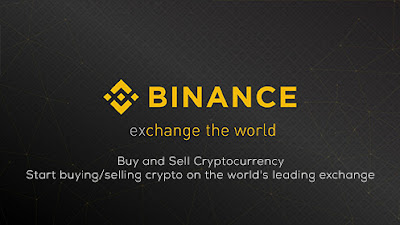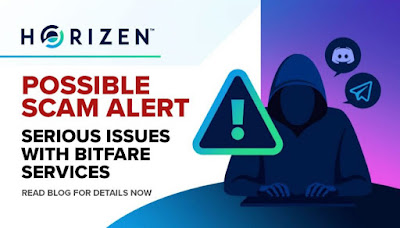How to Trade on Binance
There are three Binance trading settings: Basic, Advanced and Margin. Beginners should start by trading in Basic.
The Basic trade setting has a simple layout that’s easy to understand. Only important information for making trades is displayed. You must remember that Binance is a professional trading platform, so even the Basic trade setting might seem too complicated for some newbies to use. However, it won’t take you long to grasp it!
The Advanced and Margin trade setting gives expert traders access to all the price charts and market data that they need to make complex trades. As this is a beginner’s Binance tutorial, I’ll only be showing you how to buy on Binance in Basic. I’ll save the tricky stuff for another day!
So, let’s learn how to use Binance for Basic trades…
How to use Binance for Basic Trades
A. Go to the Binance website (www.binance.com). Click【Log In】from the menu and enter your details to log in.
If you don't have an account, all new users that register on Binance using this special referral link will enjoy a lifetime 10% trading fee discount.
B. Click on Exchange on the taskbar and select Basic.
Here is the appearance of the trading page. As you can see, Basic isn’t very basic!
- The display area of Binance Announcements
- The display area of the current trading pair in 24h Volume
- The display area of the sell order book
- The display area of the buy order book
- The display area of K-Line and Market Depth
- The type of order
- The buy area
- The sell area
- The switch area of other trading markets/trading pairs
- The display of the latest completed transaction price
C. Choose a trading pair. Binance lists hundreds of trading pairs.
These are pairs of coins that Binance offers an exchange rate for. For example, Bitcoin can be traded with 143 different coins so we say that Bitcoin has 143 trading pairs on Binance. In this example, our account is funded with Ethereum, so we are only able to trade with Ethereum. To find out which cryptocurrencies are offered for trading with Ethereum, select ETH in the top right corner. You’ll now be able to see that Ethereum has 140 different trading pairs on Binance. Select the coin that you want to exchange Ethereum for. For example, you could choose Horizen (ZEN).
D. Choose which type of trade you want to make.
Binance offers 4 kinds of trade:
Limit orders allow users to set the maximum price they are willing to pay for coins or the minimum price they are willing to sell them for. Traders then have to wait until a buyer or seller accepts their price.
Market orders allow users to trade coins at their current market price. This kind of trade is the fastest and most simple.
Stop-limit orders allow traders to buy or sell a coin once it has reached a certain price. This kind of order is often used by pro-traders. Today, I’m only going to show you how to buy on Binance with market orders. They are quick, simple and perfect for beginners.
Market orders allow users to trade coins at their current market price. This kind of trade is the fastest and most simple.
Stop-limit orders allow traders to buy or sell a coin once it has reached a certain price. This kind of order is often used by pro-traders. Today, I’m only going to show you how to buy on Binance with market orders. They are quick, simple and perfect for beginners.
OCO orders is a pair of orders combining a stop-limit order and a limit maker order on the same side, with the same quantity. When either one of the orders is executed (the stop price is triggered for stop limit order), the other one is automatically canceled. And when canceling either one of the orders, the entire OCO pair is canceled.
E. Choose the amount you want to trade.
Click on the Market if you are happy with the current market price and enter the amount of Ripple (or your chosen coin) you want to buy. You can enter this as an amount or as a percentage of the Ethereum in your account.
Trading Fees
Binance trading fees are some of the lowest on the market. Binance doesn’t charge users for making deposits. This is because the exchange is cryptocurrency-only. It avoids the high fees that exchanges that offer fiat trading have to charge.
Binance charges different withdrawal fees for different cryptocurrencies but they are all quite low. For example, if you withdraw Ethereum you’ll be charged 0.01 ETH and if you withdraw Ripple you’ll be charged 0.25 XRP.
Binance trading fees are capped at 0.1% of each purchase or sale users make. This fee is reduced by 50% if traders use Binance Coin to pay them. So, that’s a final fee of just 0.05%!
What Do "Maker" and "Taker" Mean?
Taker:
When you place an order that trades immediately, by filling partially or fully, before going on the order book, those trades will be "taker" trades.
Trades from Market orders are always Takers, as Market orders can never go on the order book. These trades are "taking" volume off of the order book, and therefore called the "taker."
Limit IOC and Limit FOK orders (accessible via the API) are also always Takers, for the same reason.
Maker:
When you place an order that goes on the order book partially or fully (such as a limit order placed via the trading screen on binance.com), any subsequent trades coming from that order will be as a “maker.”
These orders add volume to the order book, helping to "make the market," and are therefore termed the "maker" for any subsequent trades.
Note: It is possible for a Limit GTC order (accessible via the API) to have traded as the taker and maker.










Comentarii
Trimiteți un comentariu